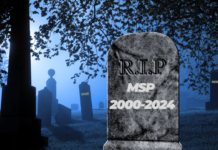DTS (Digital Theater Systems, Inc.) introduces a new suite of three pro-audio software encoders for Mac and PC to create DTS soundtracks for DVD-Audio, DVD-Video and 5.1 CD titles. Providing the only 96 kHz solution for both DVD-A and DVD-V, two of the encoders are the first commercially-available solutions for creating high-quality 96 kHz and 6.1-channel discrete DTS soundtracks. Presenting solutions for the different workflows utilized in most pro-audio facilities worldwide, all of the encoders will be available through the DTS’ international distribution network at the end of Q2 2004 (http://www.dtsonline.com/pro-audio/find/).
DTS is offering two new stand-alone encoders for both Mac and PC: a 48 kHz / 5.1 package, and a 48 kHz / 5.1-channel plus 96 kHz / ES encoder package. The 48kHz solution allows engineers to create 5.1-channel soundtracks, and also includes 44.1 kHz capability for encoding CDs. The 96 kHz / ES package encompasses all of the capability of the 48 kHz encoders, but also adds the ability to create 96 kHz or 6.1-channel discrete extended surround DTS soundtracks.
Each of the stand-alone encoders accepts both Wave and AIFF files, and conducts confidence checks at all points in the encoding process to ensure the bitstream is properly encoded and that it is sample accurate.
The company has also developed the DTS X Encode facility encoder for Apple’s Xserve RAID, which can handle up to 99 different mixing engineers on either Mac or PC platforms. This is the first time a DTS codec has used a RAID system to allow multiple users to access and encode information via an Intranet or the Internet, and is the first system to permit encoding a DTS bitstream remotely.
“Over the past several years, we’ve seen an increased interest—in the industry and amongst consumers—in incorporating superior DTS soundtracks on more content, both music and film on DVD,” said Brian Towne, Vice President, Consumer / Pro Audio Division at DTS. “The goal of introducing this suite of encoders is to meet the pro-audio community’s technical needs and therefore continue to grow the amount of DTS content available.”












